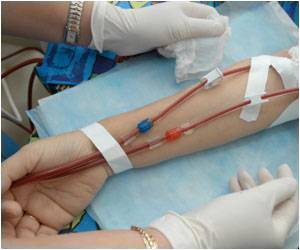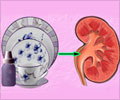Among young adult dialysis patients living in poor neighborhoods, while young compared with whites, blacks have a significantly higher risk of death.

Among young dialysis patients aged 18 to 30 years, blacks are nearly twice as likely as whites to die while still young. The reasons for this difference have not been well understood. Tanya Johns, MD, MHS (Albert Einstein College of Medicine, Montefiore Medical Center) and her colleagues wondered whether the wealth of patients' neighborhoods could play a role. The team merged information from the US Renal Data System pertaining to 11,027 young black and white patients initiating dialysis between 2006 and 2009 with US Census data regarding neighborhood wealth.
During a median follow-up of 23 months, the researchers found that young black adults living in poor neighborhoods had a higher risk of death compared with all other young black and white adults. When they looked only among young adults living in poor neighborhoods, blacks had approximately a 1.5 times greater risk of death compared with whites. In wealthier neighborhoods, the difference in mortality between black and white young adults was significantly less. The findings were not explained by medical factors, including the cause of patients' kidney failure or other health conditions such as diabetes or high blood pressure.
"In our study, young black patients' risk of death was worse when they lived in poor neighborhoods. We need to better understand how the wealth of someone's neighborhood affects patients' health while on dialysis," said Dr. Johns.
Study co-authors include Michelle Estrella MD, MHS, Deidra Crews, MD, ScM, Lawrence Appel, MD, MPH, Cheryl Anderson, PhD, MPH, MS, Patti Ephraim, MPH, Courtney Cook, and L. Ebony Boulware, MD, MPH.
Disclosures: The authors reported no financial disclosures.
Advertisement
The content of this article does not reflect the views or opinions of The American Society of Nephrology (ASN). Responsibility for the information and views expressed therein lies entirely with the author(s). ASN does not offer medical advice. All content in ASN publications is for informational purposes only, and is not intended to cover all possible uses, directions, precautions, drug interactions, or adverse effects. This content should not be used during a medical emergency or for the diagnosis or treatment of any medical condition. Please consult your doctor or other qualified health care provider if you have any questions about a medical condition, or before taking any drug, changing your diet or commencing or discontinuing any course of treatment. Do not ignore or delay obtaining professional medical advice because of information accessed through ASN. Call 911 or your doctor for all medical emergencies.
Advertisement










